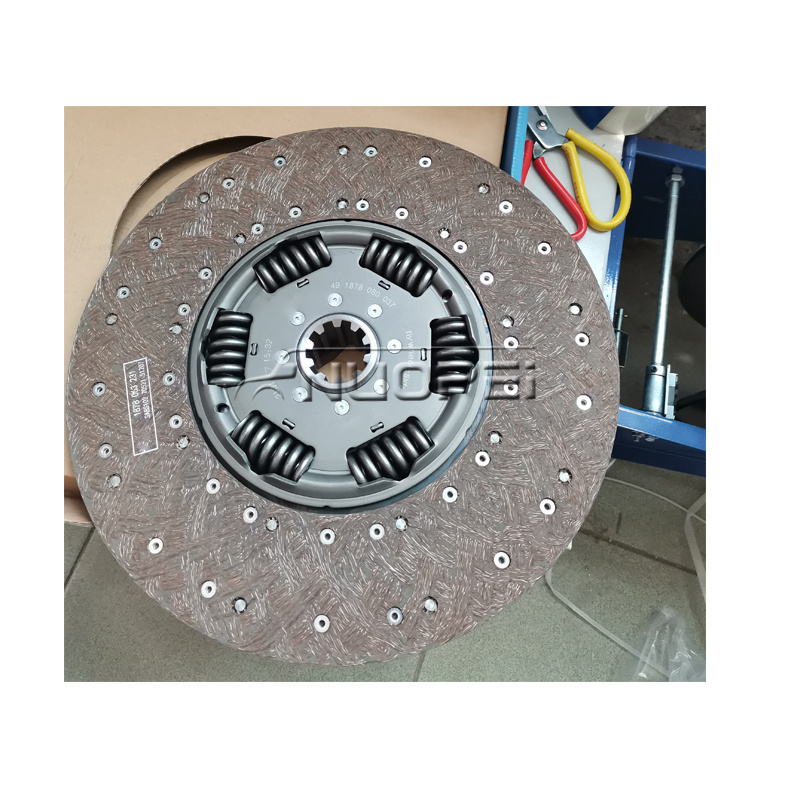Daily vehicle inspection requirements include a check of the operational parts of an air brake system, like the governor, the air compressor and the low-air-pressure warning devices. This portion of the inspection is done mostly in the cab. Here’s what you need to know.
Before beginning these checks, park the truck on level ground so it won’t roll, set the parking brakes and place wheel chocks around the wheels. The first check is the low-air-pressure warning activation pressure. Fuel Gauge For Fuel Tank

Start the engine and build the air pressure in the primary and secondary air tanks to at least 90 psi. You can leave the engine running or stop it, but the key must on for the warning system to activate.
Repeatedly press and release the brake pedal to lower the air pressure in the tanks.
Note the pressure reading on the gauges when the low air pressure warning activates. The low pressure warning must activate at or above 55 psi.
It is illegal to operate the truck on a public road if the warning fails to activate at least 55 psi. The next check is the air pressure build up time.
Here, we’re checking the performance of the air compressor. It must build air pressure from 85 psi to 100 psi within two minutes with the engine idling.
Start with the air pressure in the primary and secondary tanks at 80 psi. With the engine idling at 600 to 900 rpm, note the time when the pressure reaches 85 psi, and then note the time when the pressure reaches 100 psi.
The vehicle passes if it takes less than two minutes to build pressure from 85 to 100 psi.
As with the low pressure warning device, it is illegal to operate the truck on a public road if the compressor fails this test.
Next, we’ll check the air compressor governor cut-in and cut-out pressures.
The governor’s job is to trigger the compressor to begin pumping air into the tanks when the system air pressure drops below a certain threshold. This is called the cut-in pressure. The governor also signals the compressor to stop pumping air at a certain pressure. This is called the cut-out pressure.
To test the cut in pressure, press the brake pedal repeatedly until you see the air tank pressure begin to rise. The compressor should cut in at a pressure no lower than 80 psi.
Allow the pressure to build until the compressor cuts out. The pressure will stop building. This is usually accompanied by the sound of the air dryer discharging. The cut-out pressure should never exceed 145 psi.
The truck fails the test when the cut-in pressure is below 80 psi or of the cut-out pressure is above 145 psi.
The next test is the air system loss rate.
First, make sure the wheel chocks are in place as the parking brakes must be released for this test.
Release the parking brakes and allow the system pressure to build to the compressor cut-out pressure, then shut off the engine. Make a full-pressure brake application and hold it for 1 minute. The system pressure will initially drop by about 10 psi then stabilize. Measure the rate of pressure loss, which could be caused by a leak somewhere in the system.
The maximum allowable pressure loss for a tractor and trailer is 4 psi. For a tractor or a straight truck, it’s 3 psi. For a tractor with two trailers, the rate is 6 psi per minute. Next, we’ll check the tractor protection valve.
The tractor protection valve is designed to prevent tractor air from escaping through the service line, the blue line, in the event of an air loss on the trailer.
Get the system up to normal operating pressure, and make sure the trailer supply valve is closed. Exit the cab and disconnect the service line from the trailer. Enter the cab, apply the brakes and observe whether air is escaping from the service line gladhand.
The vehicle fails this test if air escapes from the disconnected blue service line.
The final check is to make sure the tractor and trailer spring brakes, or parking brakes, apply when the supply line is closed.
With the parking brakes set, exit the cab and remove the wheel chocks.
Back in the cab, push in the trailer supply button, so just the tractor parking brakes are holding the vehicle. Put the transmission in gear and gently tug the vehicle forward or backward. If the vehicle doesn’t move, it passes the test.
Next, release the tractor parking brakes, but set the trailer parking brakes. Like before, gently tug the vehicle. If it doesn’t move, the trailer spring brakes are holding and truck passes this check.
Stay up to date on technology, regulations and trucking life

Front Wheel Bearing Parts We use cookies to make your website experience better. By accepting this notice and continuing to browse our website you confirm you accept our Terms of Use & Privacy Policy.